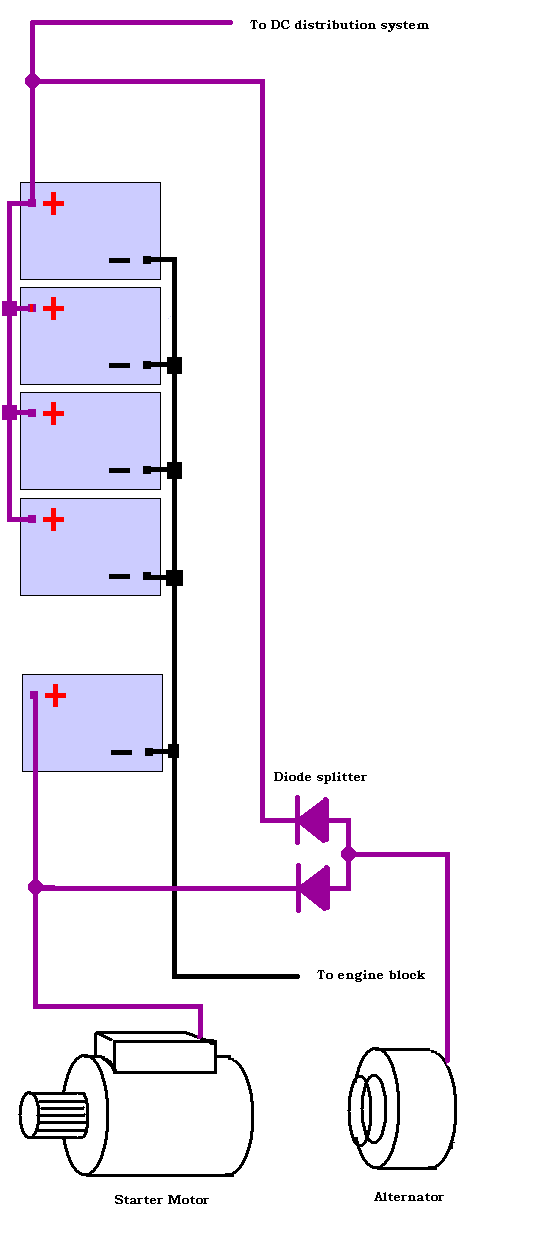Choosing your DC charging and split charging system.
Here is the same diagram but now the alternator has been disconnected from it's previous position and a diode splitter has been added.

Now what's wrong with this? The diode will allow the alternator to charge both batteries, but discharging one battery cannot affect the other due to the "one way valve" action of the diode splitter. So what is wrong with it?
One really serious problem. The diode splitter has a voltage drop across it. This voltage drop depends upon the current flowing through it and varies between about 0.6 volts at low currents up to about 1.2 volts at higher currents (it can actually even exceed this at very heavy charge currents).
Why is this a problem? Well let's assume the alternator regulates it's output to 14.4 volts (a reasonable charge voltage for lead acid batteries). The diode drops this voltage so the batteries will see between 13.2 volts and 13.8 volts. This is far too low. The batteries will hardly charge at all.
So clearly a diode splitter is no use. Or is it?
Well, there exists a device called an external alternator controller. Amongst other things, what this device does is measure the voltage at the batteries and control the alternator output to maintain the correct voltage at the batteries.
Ok. Let's put one of these in and see where that gets us.
Page last updated 02/04/2008.
Website best viewed on a computer of some sort.